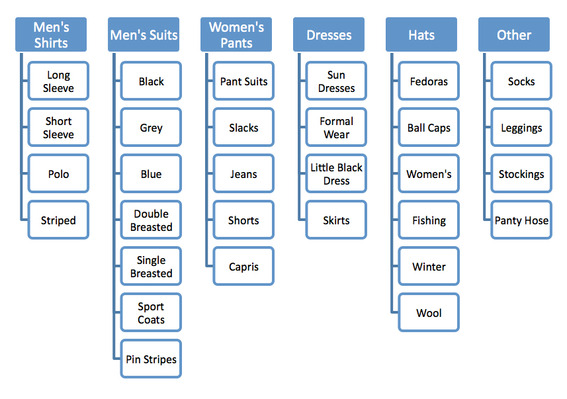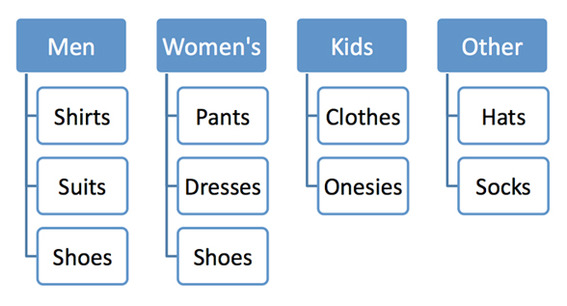Many online retailers take the “ready, fire, aim” approach when structuring their PPC (pay-per-click) campaigns. However, as competition intensifies and search engines evolve, online retailers who fail to organize their campaigns in more thoughtful ways will be penalized. Those who “aim” before they “fire,” on the other hand, will be rewarded.
All of this is amplified by the introduction of Google Instant, arguably the most significant change Google has ever made to its front-end interface. And for PPC advertisers to sort out the impact of Instant, campaign structures are crucial.
Focus on Structure
An optimal campaign structure enables online retailers to react quickly to unforeseen changes that result from events like Google Instant being launched, and the pending integration of paid search results from Bing into Yahoo!.
Rather than make bold predictions (see below) about how such events will impact paid search marketing, we decided that time would be better spent educating retailers on how to optimize their campaign structure.
A strong campaign structure provides a hierarchical perspective of a merchant’s inventory based upon search volume, brands, categories, audiences, and/or margins. It allows merchants to utilize the metrics mentioned in my last article, “Pay-Per-Click Advertising: Six Metrics that Drive Performance,” to effectively measure performance and optimize delivery. Simply put, the better a campaign structure is, the healthier and more profitable a campaign can be, regardless of the new surprises that Google, Yahoo!, and Bing will throw our way.
A strong campaign structure enables online retailers to:
- Recognize profitable opportunities before their competitors do (scale up.)
- Recognize inefficiencies in their own campaigns quickly (reallocate funds, change targeting, and so on.)
- Respond to store activity effectively and efficiently (new inventory, promotions, out of stock, and so on.)
A healthy campaign structure looks something like this:
A healthy campaign structure looks something like this.
Notice the following attributes of a healthy campaign structure:
- Ad groups are specific within campaigns, allowing for highly relevant targeting
- Campaigns are separated by product category and audience, allowing resources to be allocated appropriately
- Campaign structure can easily grow vertically and horizontally to reflect inventory and/or store changes
- Opportunities and problems can be quickly recognized and attended to
By contrast, an “OK” campaign structure might look like this:
An “OK” campaign structure might look like this.
Notice the following attributes of an “OK” campaign structure:
- Campaigns are separated only by audience
- It’s easy to see what is driving performance
- Campaign specific settings, including Demographic Targeting and Google Ad Extension Sitelinks, can be added easily
- The campaign structure only addresses categories, and does not target down to the product level
A very “bad” structure might look like this:
A very “bad” structure might look like this.
Notice the following attributes of a very “bad” campaign structure:
- Unable to allocate resources where they are needed
- Head and long-tail targets are not distinguished (head targets may take up all of the budget at the expense of long-tail targets.)
- Account does not reflect how the store is set up
- Cannot distinguish campaign targeting settings appropriately
Putting It in Perspective: Google Instant and Preparing For the Unexpected
As the average “Googler” adapts to Google Instant, new or modified behaviors are likely to emerge that impact online retailers and the PPC landscape. While we think that it is indeed a safe assumption that behaviors will change in a material way, it’s impossible to predict precisely what the new behaviors will be.
Results could vary from people typing in their search phrases differently, to people simply searching more often, thanks to the speedier interface.
How Might Searchers Type in Search Phrases Differently?
Presently, searchers have become comfortable searching for multi-word phrases where modifiers often precede broad terms. Common examples include searches for “Office Chair,” or “Brown Leather Office Chair.” Since Google Instant changes and re-orders search results with each new letter or word a searcher types in, searchers may reverse their behavior such that broad terms precede modifiers. A search for “Office Chair” could become “Chair Office.” A search for “Brown Leather Office Chair” may become “Chair Office Leather Brown.”
As a result of searchers typing broad phrases first, they will be exposed to short-tail (head) results before they see the long-tail results. For online retailers, this could mean that more of their sales will come from or at least be impacted by a smaller number of highly searched and ultra-competitive broad terms, rather than a large number of minimally searched and less competitive long-tail terms.
A Tightly-Knit Hierarchical Campaign Helps Spot Trends More Quickly
While the previous example citing a possible transition from long-tail to short-tail may be cause concern, don’t jump to conclusions quite yet. Google Instant is brand new, and the next few months need to be spent analyzing data to see how keywords, audiences, and products are performing in comparison to last month, last year, the past three months, and the past three weeks. A thorough review of that data will help us to understand the impact that Google Instant is beginning to have on searcher behavior.
The best way to easily read and correlate that data is for online retailers to structure their PPC campaigns using a hierarchal structure as we have proposed.
If the campaign structure is similar to the “bad” example above, reviewing data in order to derive insights will be a laborious process, and even then, trends won’t be readily apparent.
The “OK” example above will show how your multiple audiences are responding; and while it will offer some trend data, the “healthy” campaign structure makes it easier to see which specific products are being impacted by Google’s changes.
Real-World Example
Take the example of the “suit” campaign used in the hypothetical campaign structures above. Let’s say that this is your campaign, and that sales are down. The “healthy” structure enables you to quickly isolate the “Pinstripe Suit” ad group as being the one where return on ad spend is suffering the most.
As you do sample searches on Google you see that a search starting with the word “pinstripe” gives the following results:
Google search results for "pinstripe."
A searcher who notices that the results she is getting are not relevant could start this search over again before adding “suits” after “pinstripe,” this time typing the word “suit” first, with the intension of adding “pinstripe” after it.
Before she has a chance to type in “pinstripe” thus triggering your ad, however, she may see an ad offering “pinstripe suits” from a competitor and may click on it.
Google search for "suit" triggers a competitors’ PPC ad.
As a savvy marketer you may have avoided bidding on a generic term like “suits” in the past, but you may quickly realize that you’ll need to change your strategy if you want to resurrect sales of pinstripe suits.
Conclusion
No one really knows how events like the release of Google Instant will impact searcher behavior and PPC campaigns, especially over the long-term. That said, it is a pretty safe assumption that there will be some impact, and it could be a big one. While we can all spend time theorizing, those who construct and manage their campaign utilizing a highly scalable, hierarchal campaign structure such as the one proposed above will be in a better position to spot new trends early, and to react to them quickly.





